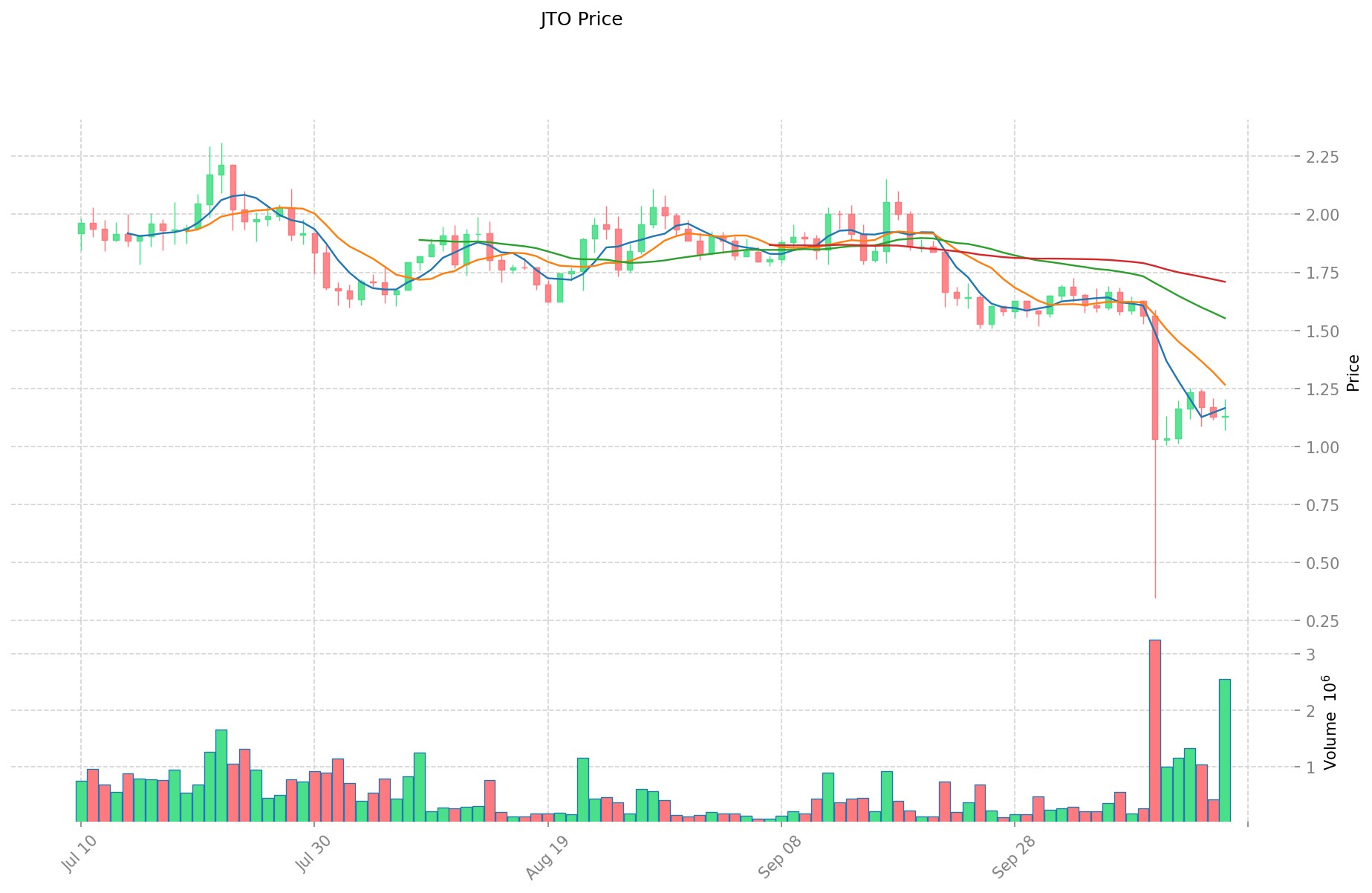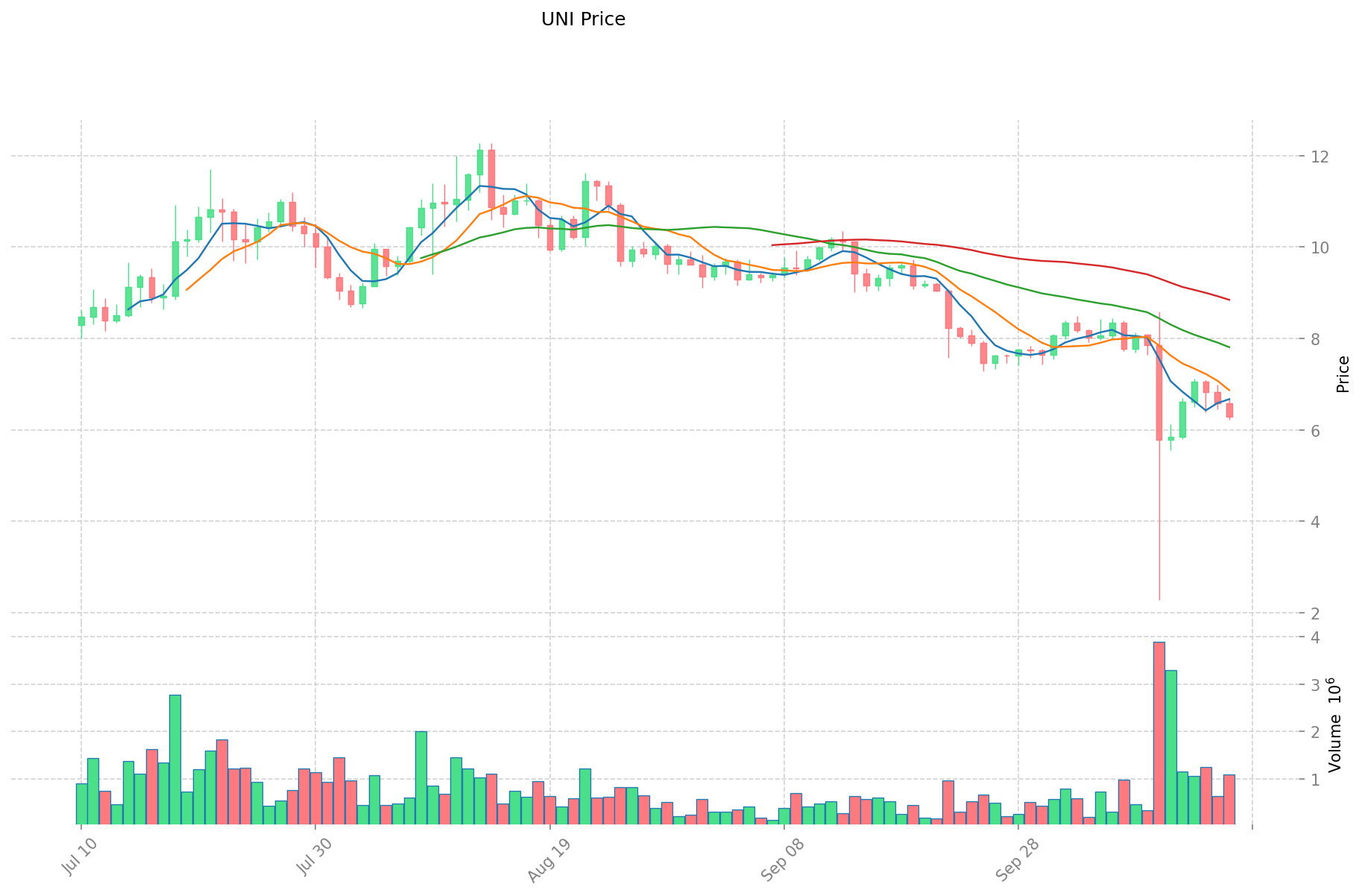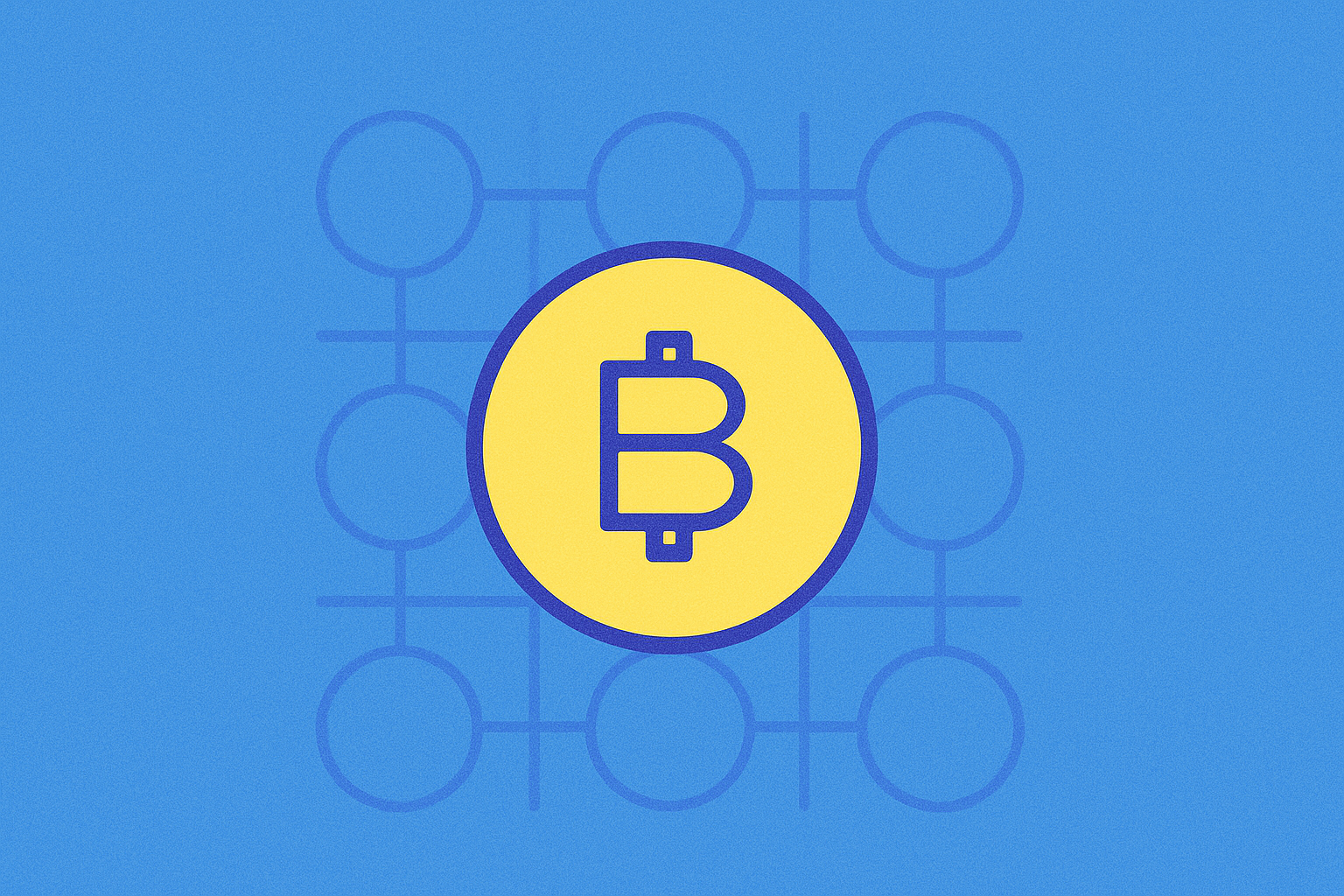JTO ve UNI: Dijital Çağda Kripto Para Üstünlüğü Yarışı

Giriş: JTO ve UNI Yatırım Karşılaştırması
Kripto para piyasasında JTO ile UNI karşılaştırması, yatırımcıların göz ardı edemeyeceği bir konu olmaya devam ediyor. Bu iki varlık, piyasa değeri sıralaması, kullanım alanı ve fiyat performansı gibi kriterlerde belirgin farklar gösterirken, kripto varlıklar arasında farklı konumlandırmaları ile öne çıkıyor.
Jito (JTO): 2023 yılında piyasaya sürülmesinden bu yana, Solana ekosistemindeki yönetişim rolü ile piyasanın dikkatini çekmiştir.
Uniswap (UNI): 2020 yılında piyasaya sürülmüş ve Ethereum üzerindeki merkeziyetsiz borsaların öncüsü olarak küresel çapta en fazla işlem gören ve en yüksek piyasa değerine sahip kripto paralardan biri haline gelmiştir.
Bu makalede, JTO ve UNI arasındaki yatırım değerinin karşılaştırılması; geçmiş fiyat hareketleri, arz mekanizmaları, kurumsal benimseme, teknolojik ekosistemler ve gelecek tahminleri açılarından detaylı şekilde incelenecek. Yatırımcıların en çok merak ettiği soruya yanıt aranacak:
"Şu anda hangisi daha iyi bir yatırım fırsatı?"
I. Fiyat Geçmişi Karşılaştırması ve Güncel Piyasa Durumu
JTO ve UNI Tarihsel Fiyat Hareketleri
- 2024: JTO, Jito Network’ün artan benimsenmesiyle 3 Nisan’da tüm zamanların en yüksek seviyesi olan $5,323’e ulaştı.
- 2021: UNI, kripto piyasasının genel boğa döneminde 3 Mayıs’ta $44,92 ile zirve yaptı.
- Karşılaştırma: Son piyasa döngülerinde JTO, $5,323’lük zirveden $0,2 seviyesine kadar gerilerken, UNI de $44,92’den güncel $6 civarına düştü.
Güncel Piyasa Durumu (17 Ekim 2025)
- JTO güncel fiyatı: $1,142
- UNI güncel fiyatı: $6,296
- 24 saatlik işlem hacmi: JTO $2.901.367, UNI $7.061.425
- Piyasa Duyarlılığı Endeksi (Korku & Açgözlülük Endeksi): 28 (Korku)
Canlı fiyatları görüntülemek için tıklayın:
- JTO güncel fiyatı Piyasa Fiyatı
- UNI güncel fiyatı Piyasa Fiyatı


II. JTO ve UNI Yatırım Değerini Etkileyen Temel Faktörler
Arz Mekanizmaları Karşılaştırması (Tokenomik)
- JTO: Tahmin modellerini şekillendiren piyasa koşullarına göre hareket eder, yatırım cazibesi potansiyel getiriye bağlıdır
- UNI: Unichain ağında çekirdek operasyon tokeni olarak çalışır, doğrulayıcı olmak için staking gerektirir
- 📌 Tarihsel Model: Token dağıtım tasarımları, yatırımcı çıkarları ile proje finansman gereksinimlerini dengeler ve fiyat döngülerini etkiler.
Kurumsal Benimseme ve Piyasa Uygulamaları
- Kurumsal Varlıklar: Sağlanan bilgilerde mevcut değil
- Kurumlarca Benimseme: UNI, Unichain ekosisteminde üretken varlığa dönüşen bir yönetişim aracı olarak görev alır
- Regülasyon Yaklaşımları: Sağlanan bilgilerde mevcut değil
Teknik Gelişim ve Ekosistem Oluşumu
- JTO Teknik Güncellemeleri: Fiyatı, önemli teknik atılımlar ve benimseme duyurularından etkilenir
- UNI Teknik Gelişimi: Unichain doğrulama ağında yönetişim aracından üretken varlığa dönüşüm
- Ekosistem Karşılaştırması: Sağlanan bilgilerde mevcut değil
Makroekonomik Faktörler ve Piyasa Döngüleri
- Enflasyonist Dönemlerde Performans: Sağlanan bilgilerde mevcut değil
- Makroekonomik Para Politikası: Sağlanan bilgilerde mevcut değil
- Piyasa Duyarlılığı: Yatırımcı güveni JTO fiyat hareketlerini doğrudan belirler; benimseme veya teknik gelişmeler hakkında olumlu haberler piyasada olumlu koşullar yaratır
III. 2025-2030 Fiyat Tahmini: JTO ve UNI
Kısa Vadeli Tahmin (2025)
- JTO: Temkinli $0,62 - $1,15 | İyimser $1,15 - $1,49
- UNI: Temkinli $3,23 - $6,33 | İyimser $6,33 - $7,22
Orta Vadeli Tahmin (2027)
- JTO, büyüme evresine geçebilir; fiyat aralığı $0,92 - $1,92
- UNI, istikrarlı büyüme evresine geçebilir; fiyat aralığı $6,76 - $8,96
- Temel etkenler: Kurumsal sermaye girişi, ETF gelişmeleri, ekosistem büyümesi
Uzun Vadeli Tahmin (2030)
- JTO: Temel senaryo $1,52 - $2,00 | İyimser senaryo $2,00 - $2,08
- UNI: Temel senaryo $5,73 - $9,88 | İyimser senaryo $9,88 - $10,48
Yasal Uyarı: Bu analiz, geçmiş verilere ve güncel piyasa trendlerine dayanır. Kripto para piyasaları son derece dalgalı ve öngörülemezdir. Bu tahminler yatırım tavsiyesi değildir. Yatırım kararı almadan önce kendi araştırmanızı yapın.
JTO:
| Yıl | Tahmini En Yüksek Fiyat | Tahmini Ortalama Fiyat | Tahmini En Düşük Fiyat | Değişim Oranı |
|---|---|---|---|---|
| 2025 | 1,4924 | 1,148 | 0,61992 | 0 |
| 2026 | 1,610644 | 1,3202 | 1,214584 | 15 |
| 2027 | 1,91970282 | 1,465422 | 0,92321586 | 28 |
| 2028 | 2,2511080053 | 1,69256241 | 1,2017193111 | 48 |
| 2029 | 2,0309902638795 | 1,97183520765 | 1,5183131098905 | 72 |
| 2030 | 2,08146924519534 | 2,00141273576475 | 1,52107367918121 | 75 |
UNI:
| Yıl | Tahmini En Yüksek Fiyat | Tahmini Ortalama Fiyat | Tahmini En Düşük Fiyat | Değişim Oranı |
|---|---|---|---|---|
| 2025 | 7,2162 | 6,33 | 3,2283 | 0 |
| 2026 | 7,45041 | 6,7731 | 4,605708 | 7 |
| 2027 | 8,9608113 | 7,111755 | 6,75616725 | 12 |
| 2028 | 11,25079641 | 8,03628315 | 7,1522920035 | 27 |
| 2029 | 10,125716769 | 9,64353978 | 6,268300857 | 53 |
| 2030 | 10,47770597097 | 9,8846282745 | 5,73308439921 | 56 |
IV. Yatırım Stratejisi Karşılaştırması: JTO ve UNI
Uzun Vadeli ve Kısa Vadeli Yatırım Stratejisi
- JTO: Solana ekosisteminin potansiyeline odaklanan yatırımcılar için uygun
- UNI: Yerleşik DeFi maruziyeti arayan yatırımcılar için uygun
Risk Yönetimi ve Varlık Dağılımı
- Temkinli yatırımcılar: JTO %10, UNI %90
- Agresif yatırımcılar: JTO %30, UNI %70
- Koruma araçları: Stablecoin tahsisi, opsiyonlar, çapraz döviz portföyü
V. Potansiyel Risk Karşılaştırması
Piyasa Riski
- JTO: Daha düşük piyasa değeri sebebiyle yüksek volatilite
- UNI: Genel DeFi piyasası dalgalanmalarından etkilenir
Teknik Risk
- JTO: Solana ekosistemi içinde ölçeklenebilirlik ve ağ istikrarı
- UNI: Akıllı sözleşme açıkları ve Ethereum ağındaki tıkanıklık
Regülasyon Riski
- Küresel regülasyon politikaları, iki tokenı farklı şekillerde etkileyebilir; UNI, daha büyük piyasa varlığı nedeniyle daha yakından izlenebilir
VI. Sonuç: Hangisi Daha İyi Bir Alım?
📌 Yatırım Değeri Özeti:
- JTO avantajları: Solana ekosisteminde yüksek büyüme potansiyeli
- UNI avantajları: Yerleşik piyasa konumu ve DeFi’de geniş kabul
✅ Yatırım Tavsiyesi:
- Yeni yatırımcılar: Yüksek risk/getiri için JTO’ya düşük, istikrar için UNI’ye yüksek oran ayırın
- Deneyimli yatırımcılar: İki tokenı dengeli portföyde tutup, risk toleransına göre oranı ayarlayın
- Kurumsal yatırımcılar: Geniş piyasa maruziyeti için UNI, Solana ekosistemine çeşitlilik için JTO
⚠️ Risk Uyarısı: Kripto para piyasalarında volatilite yüksektir. Bu makale yatırım tavsiyesi değildir. None
VII. SSS
S1: JTO ve UNI arasındaki temel farklar nelerdir? C: JTO, Solana ekosistemi ve yönetişimle ilişkili; UNI ise Ethereum üzerindeki merkeziyetsiz borsaların öncüsüdür. JTO’nun piyasa değeri daha düşük ve volatilitesi daha yüksektir; UNI ise daha yerleşik konuma ve DeFi’de daha geniş kabul görmeye sahiptir.
S2: Tarihsel olarak hangi token daha iyi performans gösterdi? C: UNI, Mayıs 2021’de $44,92 ile zirve yaptı; JTO ise Nisan 2024’te $5,323 ile en yüksek seviyesine ulaştı. Her ikisi de zirveden sonra ciddi değer kaybı yaşadı.
S3: 2030 için JTO ve UNI fiyat tahminleri nelerdir? C: 2030 itibarıyla JTO’nun iyimser senaryoda $1,52 - $2,08, UNI’nin ise $5,73 - $10,48 aralığına ulaşması bekleniyor. Bu tahminler mevcut trendlere dayanır ve yatırım tavsiyesi değildir.
S4: JTO ve UNI’nin arz mekanizması nasıl farklılık gösterir? C: JTO’nun arzı piyasa koşulları ve tahmin modelleriyle şekillenirken, UNI Unichain ağında çekirdek operasyon tokeni olup doğrulayıcı olmak için staking gerektirir.
S5: JTO ve UNI yatırımıyla ilgili başlıca riskler nelerdir? C: JTO, düşük piyasa değeri ve Solana ekosistemindeki ölçeklenebilirlik riski nedeniyle daha yüksek volatiliteye sahip. UNI ise DeFi piyasası dalgalanmalarına ve akıllı sözleşme açıklarına maruz kalır. Her iki token da regülasyon risklerinden etkilenebilir.
S6: Yatırımcılar portföylerini JTO ve UNI arasında nasıl paylaştırmalı? C: Temkinli yatırımcılar %10 JTO ve %90 UNI, agresif yatırımcılar ise %30 JTO ve %70 UNI tercih edebilir. Dağılım, kişisel risk toleransı ve yatırım hedeflerine göre belirlenmelidir.
S7: Uzun vadeli yatırım için hangi token daha uygundur? C: UNI; yerleşik piyasa konumu ve DeFi’de geniş kabulüyle uzun vadeli yatırım için daha uygun olabilir. JTO ise Solana ekosisteminde daha yüksek büyüme potansiyeli sunar. Yatırımcılar, risk toleranslarını ve projelere olan uzun vadeli güvenlerini dikkate almalıdır.

Saros (SAROS) iyi bir yatırım mı?: Bu Yükselen Kripto Paranın Potansiyeli ve Riskleri Üzerine Analiz

Solanium (SLIM) iyi bir yatırım mı?: Bu Solana tabanlı launchpad tokeninin potansiyeli ve risklerine dair analiz

PsyFi (PSY) iyi bir yatırım mı?: Bu yükselen DeFi protokolünün potansiyeli ve riskleri profesyonelce inceleniyor

Wen Lambo Finansal (WLFI): 2031'e kadar $2,587'ye giden Kripto Yatırımında Devrim Yaratmak

En İyi Kuruş Kripto 2025

PYTH nedir: DeFi Uygulamaları İçin Yüksek Performanslı Oracle Ağına Kapsamlı Rehber

GHO (GHO) yatırım için uygun mu?: Aave Governance Token'ın getiri potansiyeli ve piyasa risklerinin incelenmesi

BitcoinSV (BSV) iyi bir yatırım mı?: Kripto para piyasasında piyasa potansiyeli, riskler ve geleceğe dair beklentilerin analizi

Conflux (CFX) iyi bir yatırım mı?: Performans, Teknoloji ve Piyasa Potansiyelinin Kapsamlı Analizi

dogwifhat (WIF) iyi bir yatırım mı?: 2024 yılına yönelik riskler, potansiyel kazançlar ve piyasa dinamiklerinin detaylı analizi

JST vs MANA: Metaverse Ekosisteminde Öne Çıkan İki Blockchain Token’ının Kapsamlı Bir Karşılaştırması







